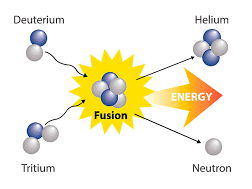The Future of Energy: Nuclear Fusion
Nuclear fusion stands as a promising frontier in clean energy technology, harnessing the power of the sun to generate electricity on Earth. Unlike nuclear fission, which splits atoms to release energy and radioactive waste, fusion involves fusing atomic nuclei, typically isotopes of hydrogen, to form helium, releasing vast amounts of energy in the process. The challenge lies in recreating and sustaining the extreme conditions necessary for fusion reactions to occur, such as temperatures exceeding millions of degrees Celsius and immense pressure. Despite these hurdles, significant progress has been made in recent decades.
The development of fusion technology has seen major international collaborations, such as the ITER project in France, which aims to demonstrate the feasibility of fusion power on a large scale. ITER, a tokamak reactor, uses powerful magnetic fields to confine and heat plasma to temperatures hotter than the sun's core, enabling sustained fusion reactions. If successful, fusion could provide a virtually limitless source of clean energy with minimal environmental impact and no long-lived radioactive waste, unlike traditional nuclear fission.

Looking to the future, advancements in fusion research continue to push boundaries. Projects like the National Ignition Facility in the United States explore alternative approaches, such as laser fusion, aiming to achieve controlled fusion through rapid compression of fuel pellets. Beyond energy production, fusion offers potential applications in fields ranging from space propulsion to medical isotopes production. While technical challenges remain, including the need for improved materials and efficient energy extraction methods, the pursuit of fusion power remains a beacon of hope for sustainable energy solutions in a carbon-constrained world.
In contrast to nuclear fission, which powers current nuclear reactors, fusion represents a fundamentally different approach to generating energy. Fission splits heavy atomic nuclei, such as uranium-235, into smaller fragments, releasing energy and additional neutrons. This process produces radioactive waste that remains hazardous for thousands of years, necessitating careful handling and disposal. In contrast, fusion involves merging light atomic nuclei, typically isotopes of hydrogen, to form helium, accompanied by high-energy neutrons but with significantly less long-lived radioactive waste. Fusion reactions also do not produce greenhouse gases or contribute to global warming, offering a cleaner and potentially more sustainable energy source.
Overall, while nuclear fusion technology has not yet achieved commercial viability, ongoing research and development hold immense promise for the future. With potential benefits including abundant fuel supplies, minimal waste, and intrinsic safety features, fusion stands poised to revolutionize global energy production once technical challenges are overcome. Continued international collaboration and investment in fusion research are crucial to realizing this transformative technology and addressing the world's growing energy needs in an environmentally responsible manner.